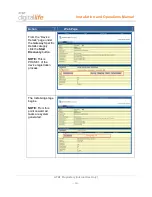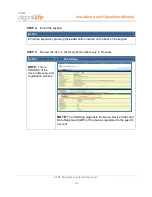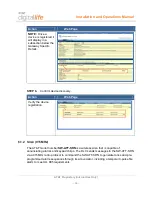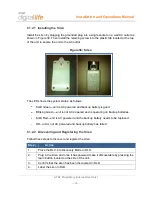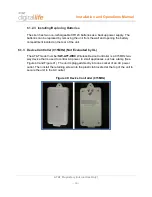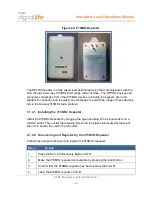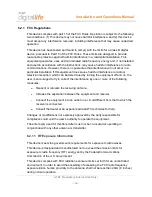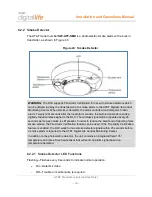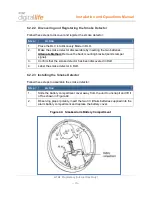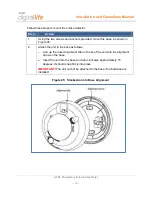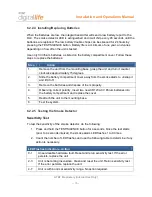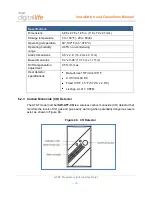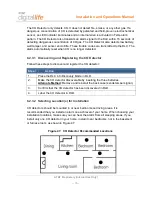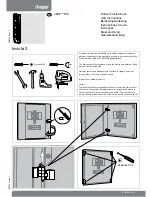
Installation and Operations Manual
AT&T Proprietary (Internal Use Only)
—73—
LED Flashes Indication—Action
8-9
Unit is becoming too sensitive. Verify that the optical chamber is snapped
down securely. Clean the unit and replace the optical chamber. After the
LED flashes, if the sensitivity is within limits and all other tests pass, the unit
goes into alarm and resets after 7 seconds. If the sensitivity is not within
limits, or an unserviceable hardware fault has been detected, the unit LED
extinguishes until the unit is serviced.
6.2.2.6 Maintaining the Smoke Detector
The units are designed for easy field service and maintenance. When installed and used
properly, they require minimal maintenance. Follow these guidelines:
Test the unit weekly.
Clean the cover with a dry or damp (water) cloth as needed to keep it free from
dust and dirt.
When a unit requires maintenance, it extinguishes its LED and stops sending
supervisory signals to the alarm DLC. If the DLC indicates supervisory trouble for
the smoke alarm, perform the sensitivity test and follow the recommended
actions.
6.2.2.7 Specifications—Smoke Detector
Specifications
Voltage
3V DC
Current
Typical average standby current 35μA
Typical test current 2mA
Typical alarm current 70mA
Battery type
3V lithium, Duracell® 123A, Panasonic® CR123A,
Sanyo® 123A or equal
Low battery threshold
2.70V causes low battery signal
Low battery beep rate
1 every 45 sec.
Frequency
433.92MHz
Sounder
85dBa at 10’ temporal pattern
Sensitivity
2.2% ± 1.3% / ft.

